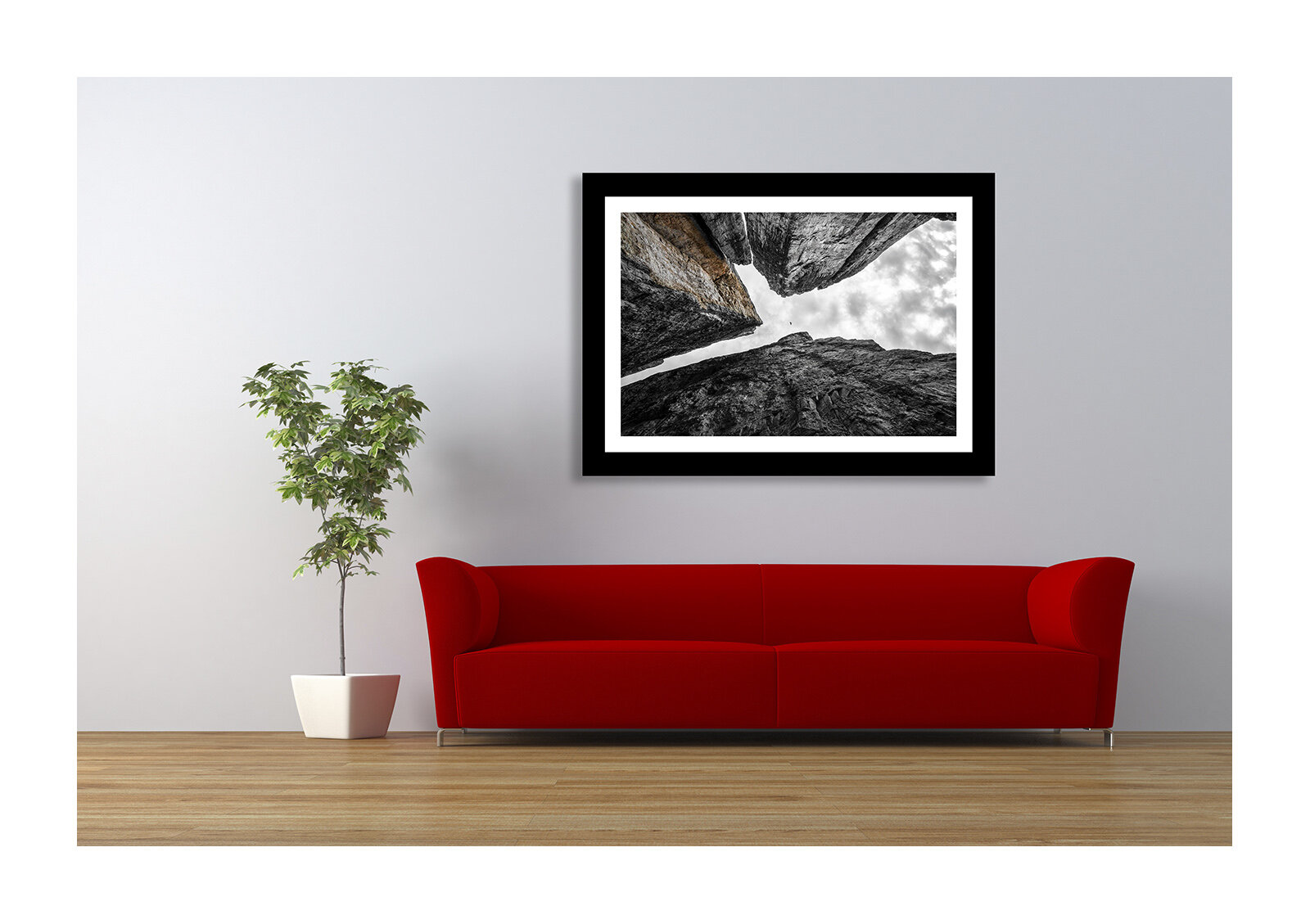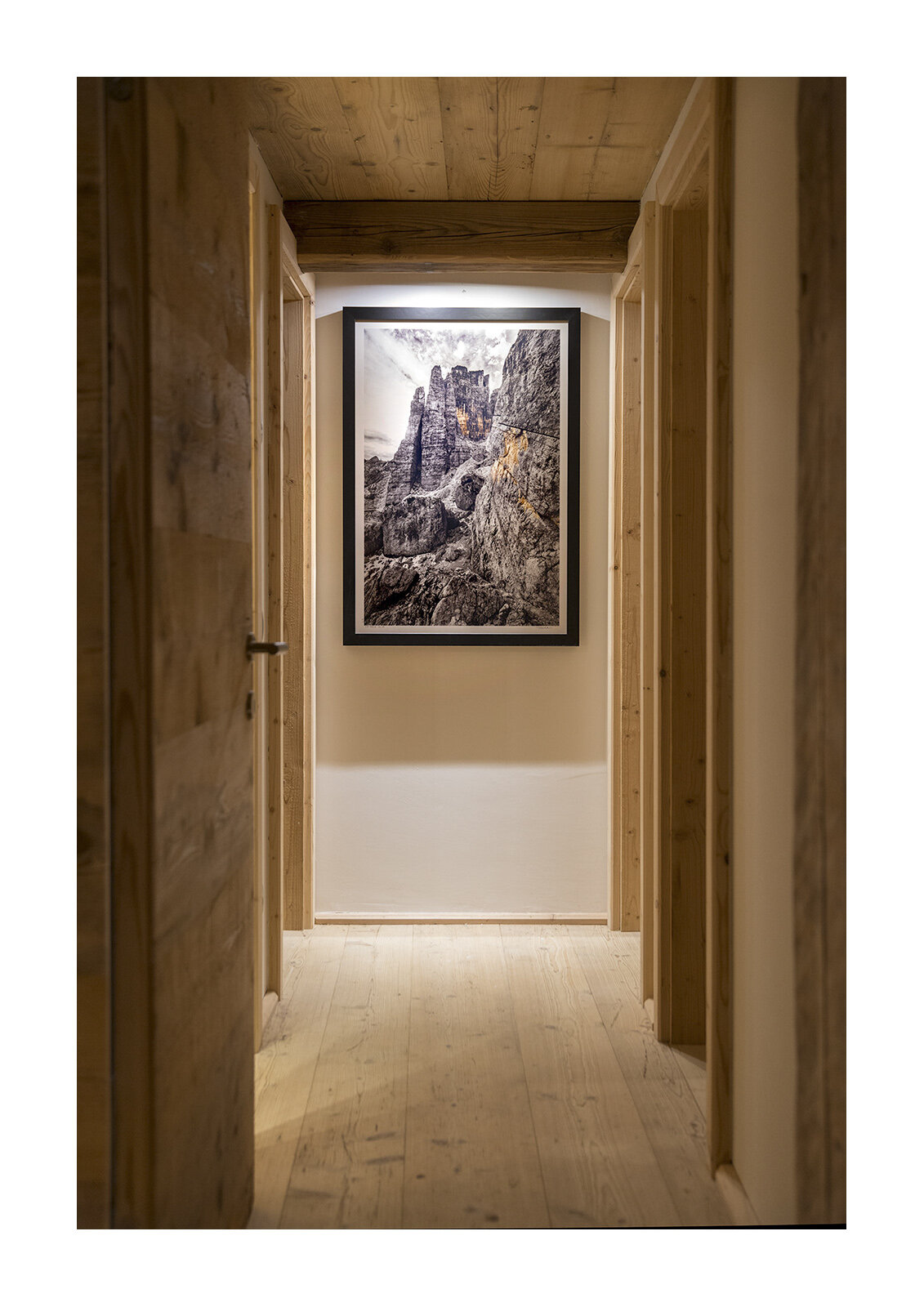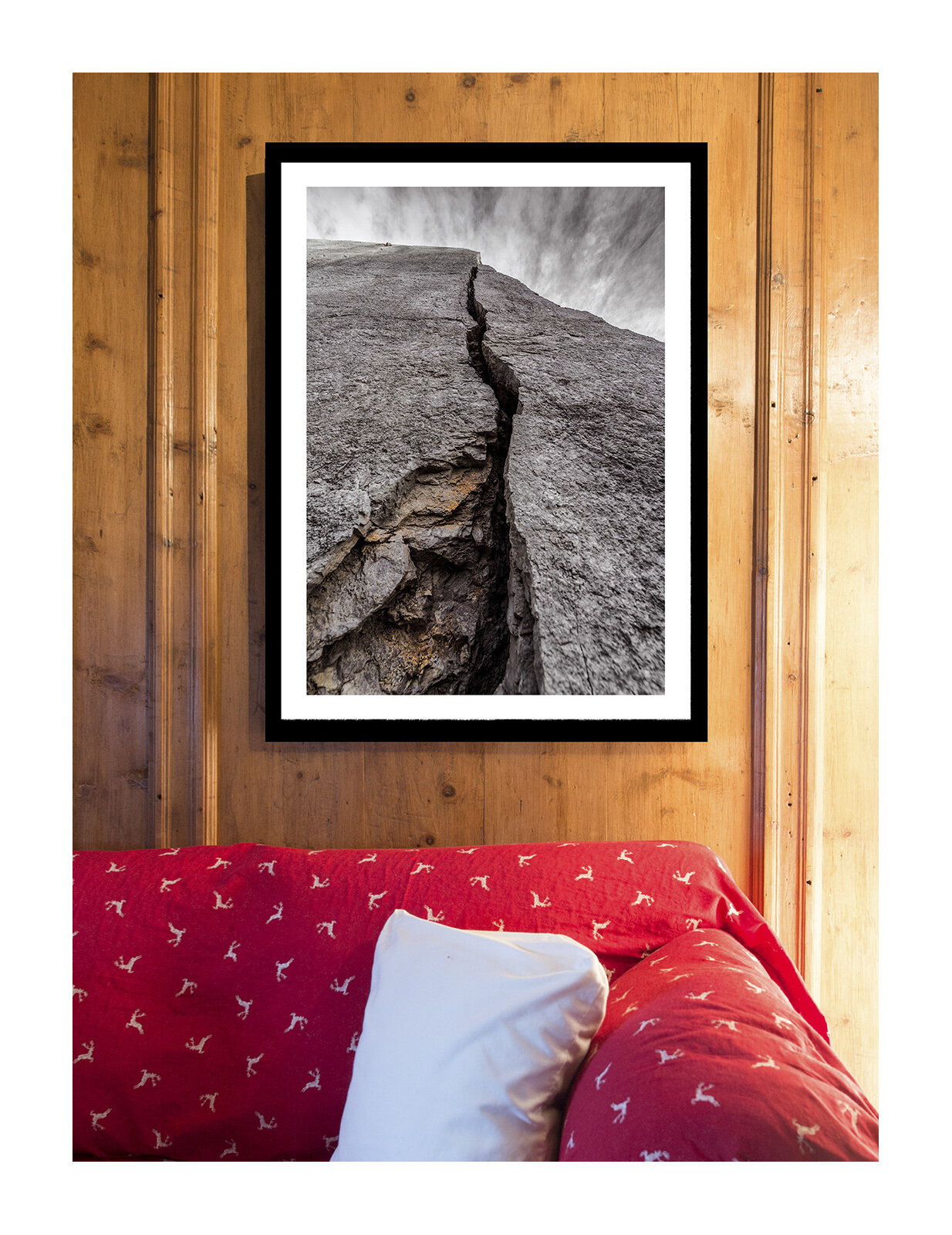La pelle
(MgCa(CO3)2)
E’ da 250 milioni di anni che sono emerse dal fondo del mare, poi è iniziata l'ossidazione e il giallo caldo si è trasformato in un grigio freddo.
Ma è nelle pareti apparse di recente che ancora si possono vedere i colori originali della pelle delle Dolomiti.
Migliaia di anni alla luce cambiano la chimica e i colori mutano inevitabilmente.
Le pareti vogliono regalarci ancora l’aspetto più autentico e lo riparano dalle piogge per ritardarne la mutazione.
Il colore prezioso, quello giallo arancio, è riservato solo a chi, in punta di piedi e con il silenzio nei polpastrelli ne sa sfiorare la superficie appena increspata, come quella di una sirena appena emersa dalla profondità degli abissi.
© Stefano Zardini
Skin
(MgCa(CO3)2)
250 million years have elapsed since they emerged from the depths of the sea. Then oxidation began, and the warm yellow turned cold grey.
But it is in the rock faces that have recently appeared that the original colours of the Dolomites' skin can still be seen.
Thousands of years of light change the chemistry, and the colours inevitably change.
The walls still want to give us their most authentic look, and protect it from the rain to delay the mutation.
The precious colour, orange-yellow, is reserved only for those who, on tiptoe and with the silence in their fingertips, know how to brush the just-ruffled surface, like that of a mermaid just emerging from the depths of the waves.
© Stefano Zardini
Ambiente.










